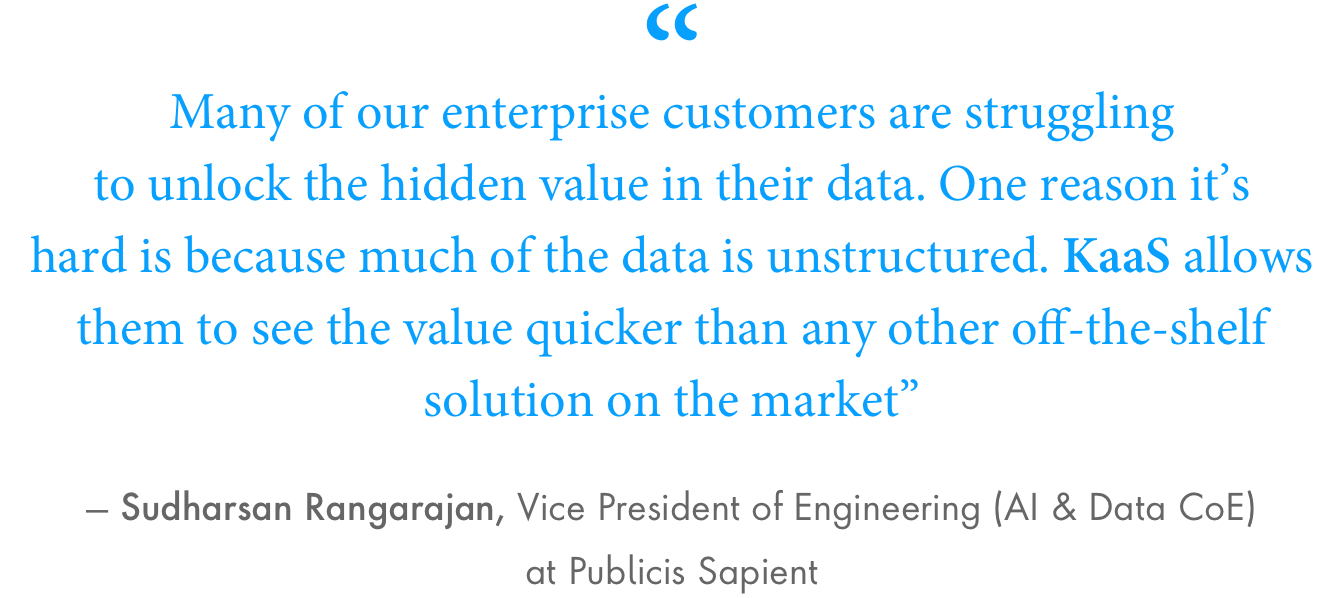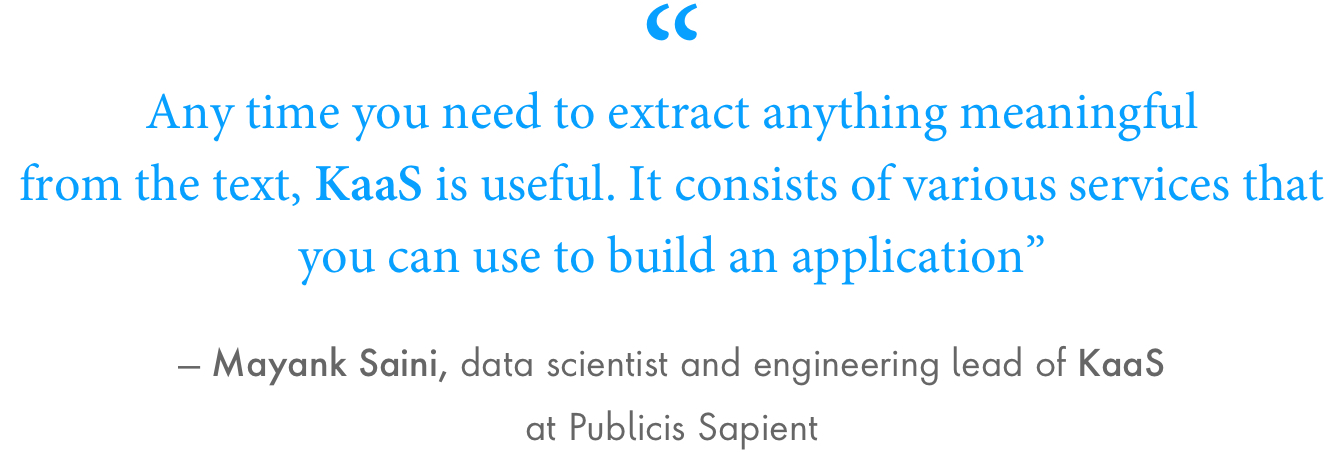
Solution
{{eyebrowContentTitle ? eyebrowContentTitle : activeTagName}}
Agentic Retail Network Agentic Retail Network Agentic Retail Network Agentic Retail Network
Forge the path toward powering your agentic retail enterprise.
Type in your prompt above or try one of these suggestions


KaaS
By 2025, almost 80 percent of the data at the enterprise level will be unstructured. Usually, a lot of time and money is spent on organizing the data into structured forms like data warehouses. Given the exponential growth in generation of new content, we need tools to directly access and process the unstructured data rather than try to curate them first.

KaaS (Knowledge as a Service) is our suite of services to mine unstructured data. Using Artificial Intelligence and Machine Learning, KaaS extracts and organizes relevant data while hiding the complexity of AI models and frameworks. Developers can build and deploy enterprise AI solutions around these data points quickly – even if they have limited machine learning expertise.

KaaS services are designed in such a way that you can use only the relevant services for your business problem. These services can be orchestrated to build scalable, more complex enterprise-grade solutions like:

From business standpoint, our customers see benefits on multiple fronts:
The KaaS portfolio of services makes sense of natural and unstructured language so it can be structured and operationalized. Our tools can resolve ambiguous terms, identify intended meanings (when they’re different from the literal meanings), evaluate the emotional state of the speaker or author, categorize phrases and concepts and recognize semantic relationships.
With this thorough understanding of a document or website’s contents, KaaS trains chatbots and search engines to engage with this language as close as possible to the way a human would – with an ear for nuance and context. This facilitates a more natural and fluid interaction with artificial intelligence solutions and improves workflow accuracy.

Few of the KaaS services that are part of the offering are:
KaaS removes the complexity of machine learning so its services can be integrated into larger application architectures easily – accelerating the time to value. Since the services can be deployed over the cloud or locally, businesses can protect their data and ensure they comply with regulations or policies.
More Solutions